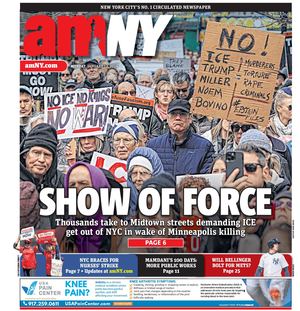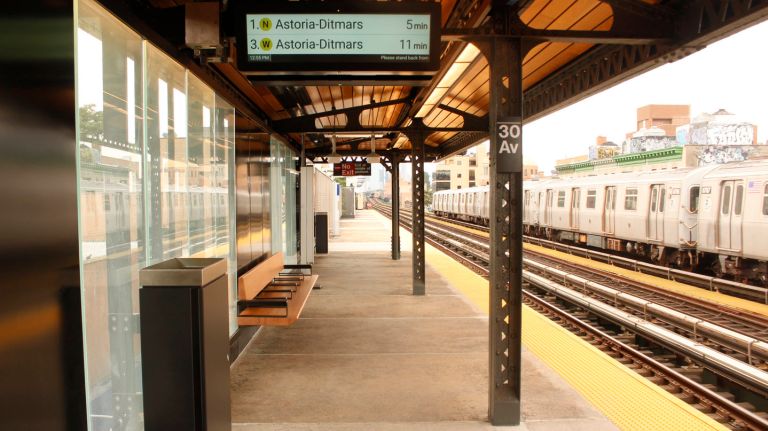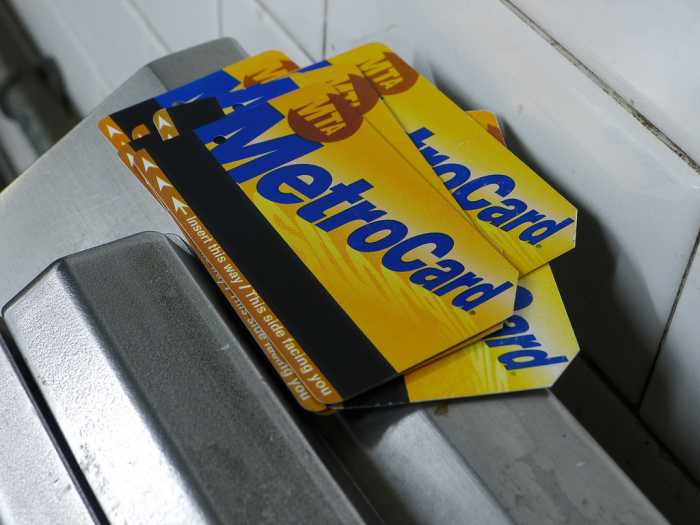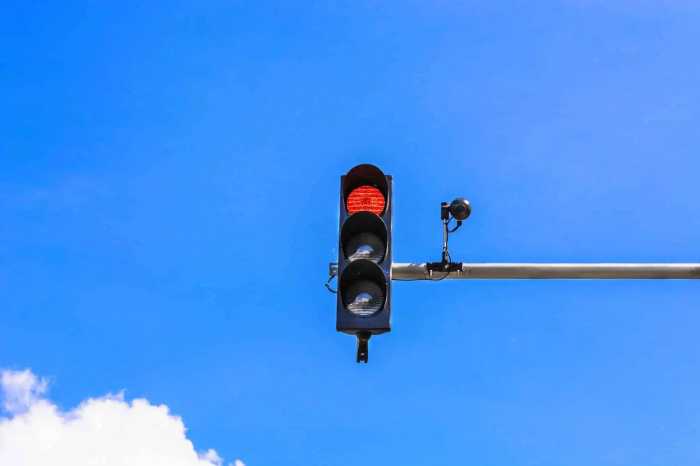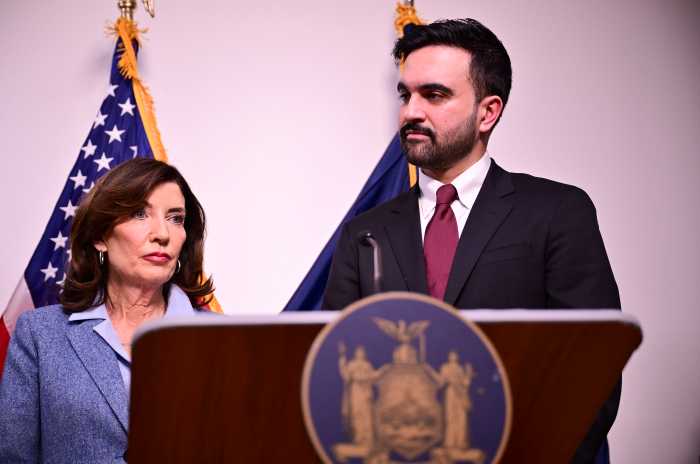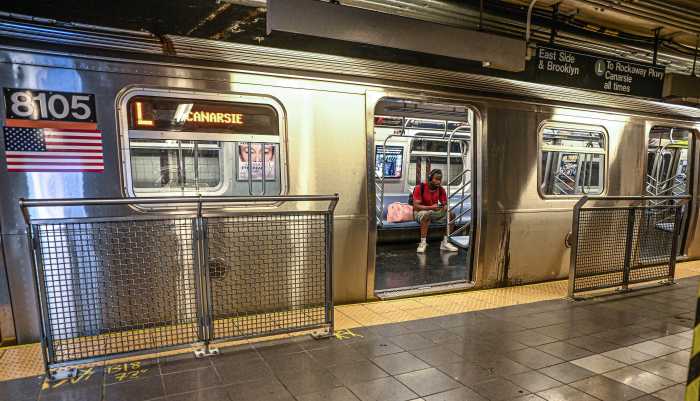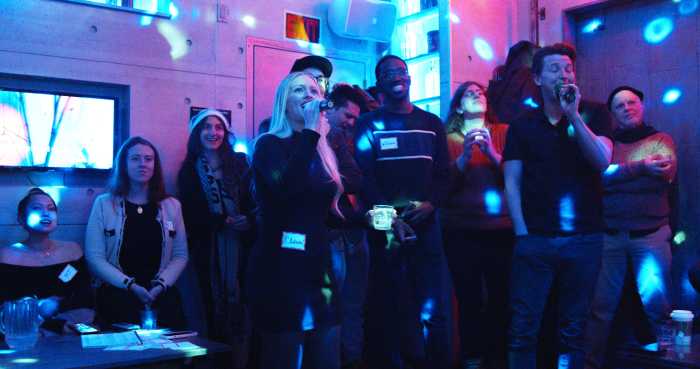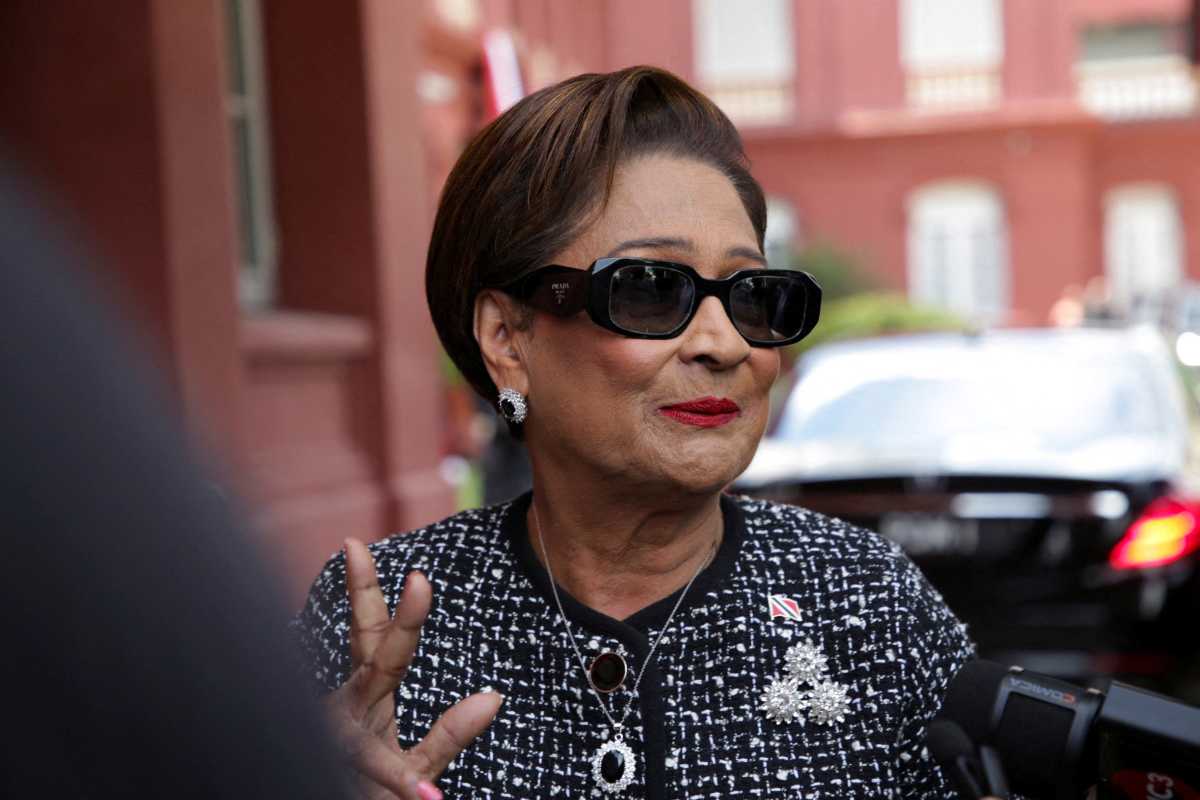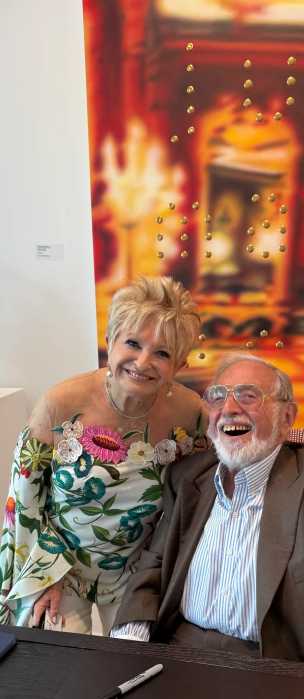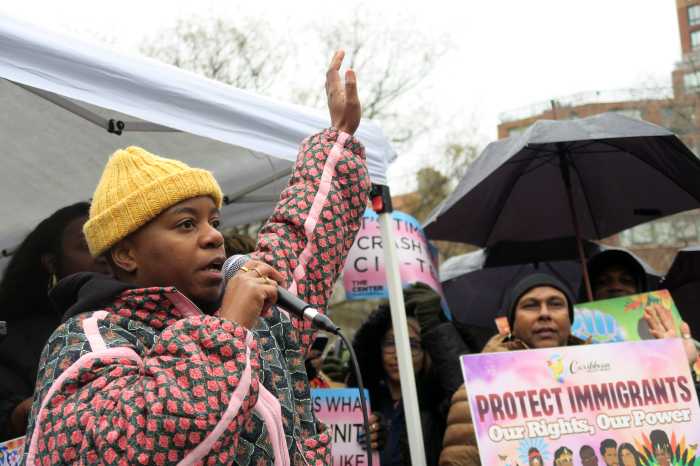
Two subway stations in Astoria reopened Friday following eight months of aesthetic renovations under the MTA’s controversial Enhanced Station Initiative.
The rehabilitation efforts at the 30th Avenue and 36th Avenue stations, which are both above ground and serve the N and W lines, included improvements to entrances, mezzanines, platforms, as well as structural repairs, according to the MTA.
Improved signage on both ground and platform levels, refurbished staircases, glass service gates, LED lighting and wood-paneled benches were added to each station, as well as wire mesh platform windscreens.
The ground level of the 36th Avenue station also boasts several floor-to-ceiling laminated glass artworks by Maureen McQuillan, known as “Crystal Blue Persuasion.” Artist Stephen Westfall was commissioned to create the laminated glass artworks, known as “Perasma I and II; Dappleganger,” at the 30th Avenue station.
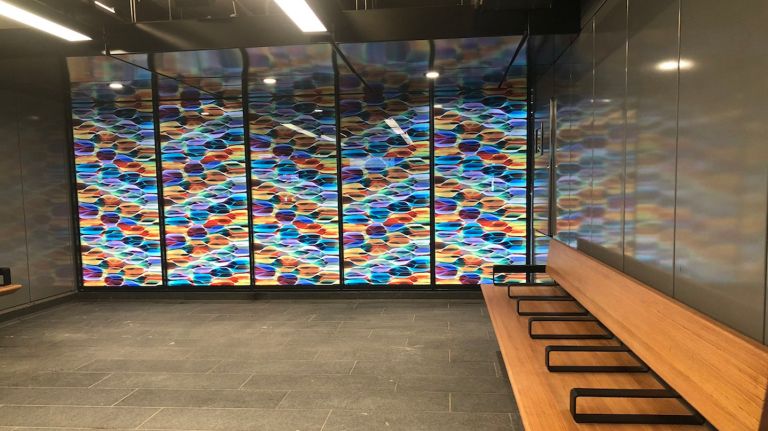
Astoria resident Rocelli DeGuzman, 49, was taking photos of the 36th Avenue station shortly after 11:30 a.m., about a half-hour after it had opened to commuters.
“It’s amazing; totally different from how it was,” DeGuzman said. “This is one nice upgrade.”
The improvements are similar to work that was completed at the Bay Ridge Avenue and 53rd Street stations in Brooklyn, which were the first to reopen after Enhanced Station Initiative redesigns.
Noticeably absent from the renovations, however, are elevators – a sticking point with commuters and disabilities advocates since the stations are not compliant with the Americans with Disabilities Act.
“I like the design. I wish they had an elevator for handicapped people,” Andrew Soulios, 32, said while standing on a renovated 30th Avenue platform. “They did this big renovation but no elevator for disabled people. I’m happy otherwise.”
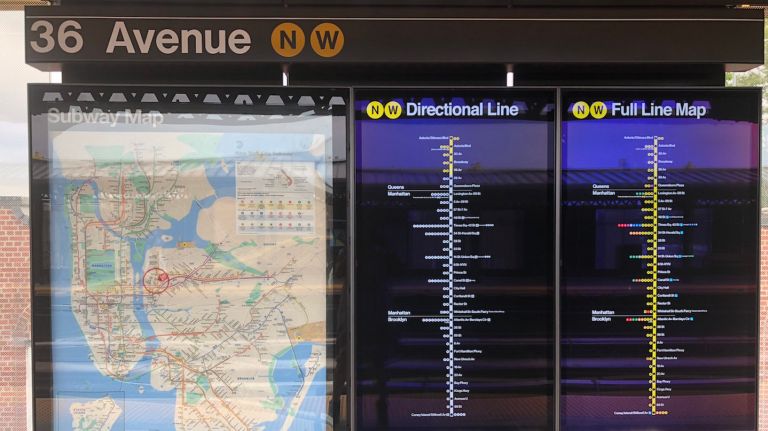
Max Lam, who lives a few blocks away from the 30th Avenue station, said he’s disappointed that it wasn’t made accessible.
“One thing I do understand is that these stations haven’t been touched for a 100 years. I’m appreciative that the MTA is focusing on the Astoria line,” he said. “But I hope that in the future that they do create a project to make these stations more accessible.”
The NYCT Subway Twitter account responded to similar complaints on the social media platform, promising that expanding accessibility is “an integral part” of the MTA’s plan to improve subway stations. The agency is working to make 50 subway stations ADA compliant within five years.
Some commuters also grumbled over the lack of service improvements in the project.
“The transit quality needs to improve. This is really lovely but what matters more to us is to get to wherever they need to get to,” said East Harlem resident Laura High, 30, who has a weekly appointment near the 36th Avenue station.
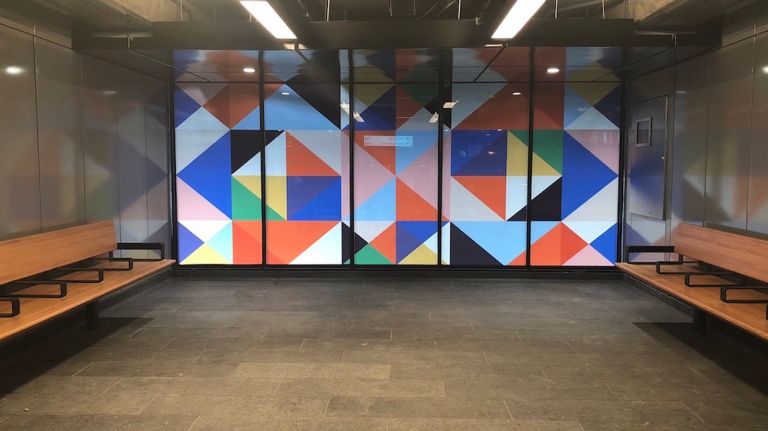
Adam Andrianopoulos, also of East Harlem and traveling with High, said now that the stations have been improved structurally, it’s time for the MTA to focus on service.
“They need to upgrade the signal system all through New York,” he added.
Despite concerns over service, both welcomed the aesthetic and structural improvements. The glass barriers running along the length of the station, with wire mesh replacing it on the edges, was a favorite of High’s.
“It felt a little risky before. It felt like you were gambling with your life a little bit,” she said. “When you felt a good strong wind, you didn’t know if you could keep standing.
“This is really nice. This is fantastic.”
